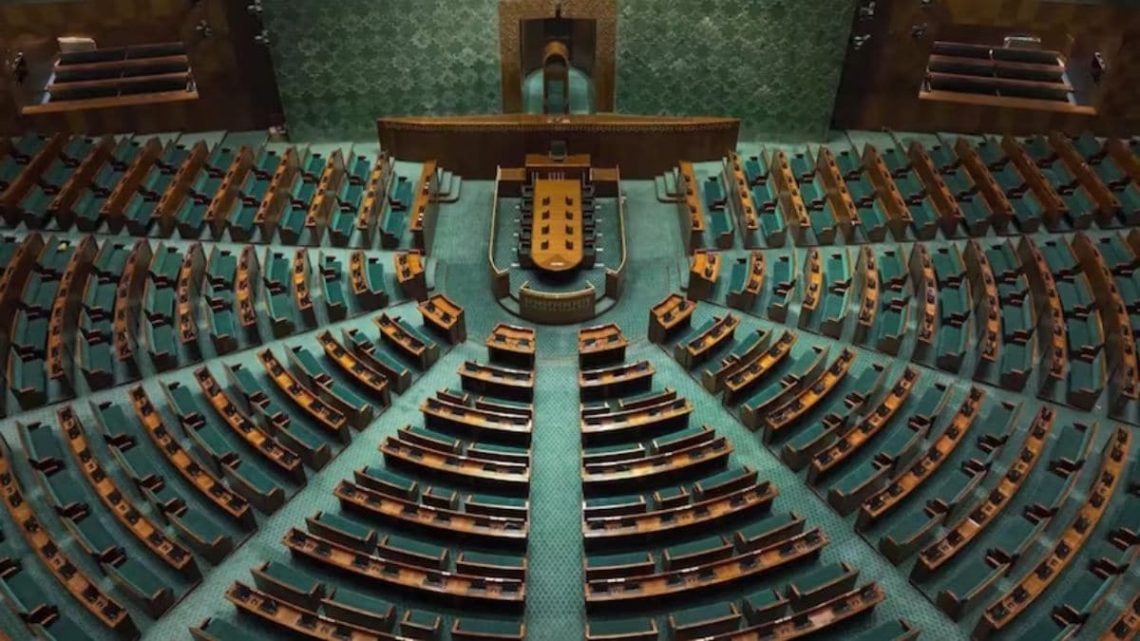Narendra Modi is expected to take the oath as the Prime Minister of India for a third consecutive term at 7:15 pm at Rashtrapati Bhawan on June 9. This milestone makes Modi only the second person after former PM Jawaharlal Nehru to achieve such a feat.
Yet, all eyes are on which MP-elects from the NDA will make the final cut into Modi’s Cabinet and Council of Ministers. These ministers are also scheduled to take their oath on Sunday. With Modi needing to rely on coalition allies to run his government, the charge of ministries is likely to be distributed in a manner that accommodates them well.
Still, there is a limitation that the NDA must adhere to: there cannot be more than 81 ministers, including the PM himself.
We take a look at why this limitation exists, and also how many Ministers Modi’s past governments have had.
No more than 81 ministers
The Constitution (Ninety-first Amendment) Act, 2003, sets specific limits on the number of ministers that can be appointed in both the Union and State governments in India. According to this amendment, the total number of ministers, including the Prime Minister, in the Council of Ministers, cannot exceed 15 per cent of the total number of members of the House of the People (Lok Sabha). With 543 members in the Lok Sabha, this means there can be only 80 ministers, apart from the Prime Minister of India.
This limitation was introduced to curb the practice of forming abnormally large Councils of Ministers, which were seen as inefficient and prone to political manipulation. Consequently, only a select few ministers are expected to hold more than one ministry under their charge this time around.
However, it’s important to note that while the number of ministers is capped, the Constitution of India does not impose a specific limit on the number of ministries (departments) that the Union Government can have. The number of ministries or departments can vary based on administrative needs, policy priorities, and the discretion of the PM. Ministries can be created, merged, or dissolved through executive decisions to ensure effective governance.
Modi’s cabinet evolution in past two terms
In Modi’s previous terms, his Cabinets have started off relatively small and then expanded over time.
After the 2014 elections, Narendra Modi’s government began with a Council of Ministers consisting of 45 members, including 23 Cabinet Ministers, 10 Ministers of State with independent charge, and 12 Ministers of State. Six months into his tenure, on November 9, 2014, the first major expansion took place, adding 21 new ministers and increasing the total to 66 ministers.
Subsequent reshuffles, particularly significant ones in July 2016 and September 2017, further expanded the Council. By the time of the major reshuffle on July 7, 2021, the size of the Council had reached 77 members, including 36 new faces and 7 promotions to Cabinet rank, according to India Today.
After the 2019 general elections, the second Modi government initially had a Council of Ministers comprising 58 members: 24 Cabinet Ministers, 9 Ministers of State with independent charge, and 25 Ministers of State. This composition underwent several expansions and reshuffles over the next few years.
As of March 20, 2024, the second Modi government had a structured Council of Ministers consisting of the Prime Minister, 29 Cabinet Ministers, 3 Ministers of State with independent charge, and 42 Ministers of State.
Maintaining a delicate balance
As Modi embarks on his third term, the focus will be on how he balances the need for effective governance with the political necessity of keeping coalition allies satisfied. The Janata Dal (United), led by Nitish Kumar, and the Telugu Desam Party (TDP), led by Chandrababu Naidu, emerged as kingmakers in the 2024 Lok Sabha elections. Keeping these two crucial allies happy means giving them plum portfolios.
While Modi 3.0 cannot have more than 81 ministers due to constitutional limitations, the strategic distribution of ministries and potential for future expansions will be closely watched by political analysts and the public alike.
With inputs from agencies
Link to article –
